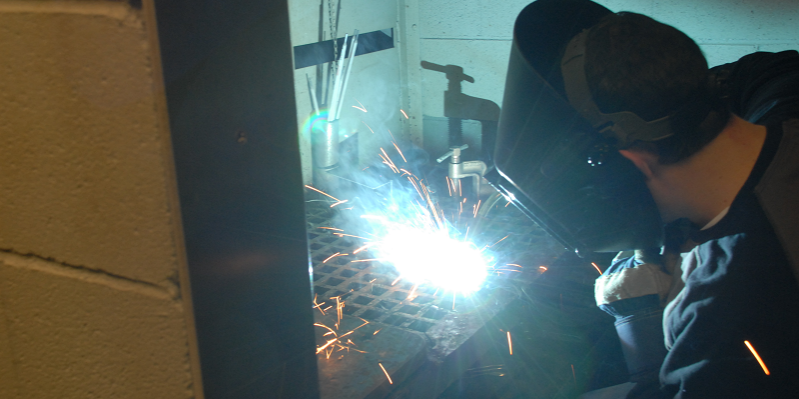
CareerFocus Feature:
Make Sparks Fly
By Tom Caylor
When you think of the word “welding”, what comes to mind?
Most of us think of a person wearing a large piece of head gear, using a blowtorch with sparks flying. We know that the person is joining metal parts together by applying heat to form a permanent bond.
However, welding has become so much more. “Welding Engineers” are leaving community colleges and four-year universities with degrees and certificates in hand, and working for a variety of industries, including manufacturing, sales, engineering and research. Although the typical welder is still out there and in demand – in shipbuilding, automobile manufacturing and repair, aerospace applications, construction and thousands of other manufacturing activities – the field is expanding and new opportunities are being created, which means the level of skills needed to succeed is growing as well.
Wayne Community College offers a one-year Welding Technology Program, which leads to a diploma, along with several certificate options for specific types of welding. There are about 100 different types of welding, but Wayne Community teaches three main areas: Shielded Metal Arc (or Stick), Gas Metal Arc (or Mig), and Gas Tungsten Arc (or Tig). Students can enroll in the program to simply “brush up” on their welding skills, or complete the requirements of a certificate and/or degree.
According to the U.S. Bureau of Labor Statistics, welders (along with those in soldering and brazing) hold more than 425,000 jobs in this country. Of these jobs, more than six out of every ten are found in manufacturing. Job prospects are expected to be excellent as employers report difficulty finding enough qualified people. In addition, openings are expected to increase as a large number of workers retire over the next decade.
Some welders become certified, a process whereby the employer sends a worker to an institution, such as an independent testing lab, equipment manufacturer or technical school, to weld a test specimen according to specific codes and standards required by the employer. Testing procedures are based on the standards and codes set by industry associations with which the employer may be affiliated. If the welding inspector at the examining institution determines that the worker has performed according to the employer’s guidelines, the inspector will then certify that the welder being tested is able to work with a particular welding procedure.
Many welders who earn certificates or diplomas end up working for local contractors or companies and become journeymen – in essence, tradesmen or craftsmen who have completed an apprenticeship. Career opportunities are available in construction, manufacturing, fabrication, sales, quality control, supervision, and welding-related self employment. Salaries start from $26,000 to $40,000 per year and go up for specialized skill sets.
For more information on the College’s Welding Program, contact Chad Pate at (919) 739-6816 or [email protected]. For information about applying to WCC, contact Melissa Stephens at 919-739-6714 or [email protected].



